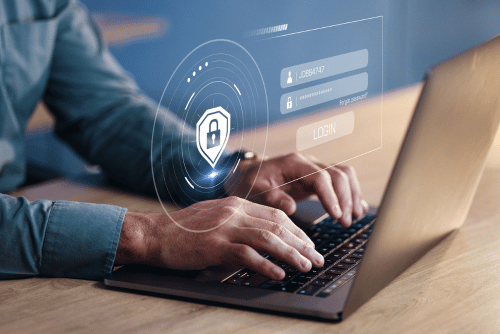Cybercrimes on businesses has been on the rise within the last few years, leading to businesses being scammed out of hundreds of millions of dollars yearly. Cybercriminals will go after both small and large businesses using one of the most financially damaging cybercrimes known as Business Email Compromise (BEC).
Despite the shocking numbers, many businesses still don’t take cybersecurity seriously. Research shows that one third of Canadian employees have little to no concern about theft of company data. According to the Canadian Centre for Cybersecurity (CAFC), there were 70,878 reports of fraud with over $530.4 million stolen in Canada in 2022. As of March 2024, there have been 10,735 reports of fraud to the CAFC, and Canadians have lost $123million in fraud scams. The financial loss and security compromise to your business makes providing cyber security guidelines for employees crucial.
What is cybersecurity?
Cybersecurity is the practice of protecting cyber systems, networks, and programs from digital/cyber attacks. Some of the most common types of cyberattacks companies face are:
- Malware – This is a malicious software usually in the form of an attachment or link that can install itself on your device and access your system’s data. Types of malwares includes spyware, viruses, ransomware, and worms.
- Phishing – Phishing uses email or text messages to convince you to open messages and follow specific instructions inside. Typically, these involve links that seem legit but are actually used to access your personal information and install malware on your device.
- Spear phishing – Another form of phishing, used to target a specific individual or business based on personal information gathered by the scammers. The information is then used to help convince the targeted persons within the organization that the email is coming from someone they know or trust. This could be an email from the accounting department, supervisor or even the CEO, requesting valuable information or action.
- Backdoor Trojan – Involves malicious programs used to install malware or data on your device to open a “backdoor” to your system. This allows attackers to hijack your device and access your information without making it known to you.
- Ransomware – This essentially involves attackers uploading malicious software to your device, allowing them to hold your system hostage while demanding a ransom. Scammers could block your access or even threaten to release your business’ private, confidential information. However, paying the ransom does not necessarily mean they won’t make good on their threats.
- Password attacks - Another popular type of cyberattack in the business place. Attackers will either try guessing your password or use more complex methods such as keylogging to gain access to your information. They may even combine the attack with phishing by getting you to enter your credentials on a site masquerading as a trusted site.
How to improve cybersecurity in the workplace
If your business or employees are ill-equipped to handle cyberattacks, all is not lost. Here are a few cybersecurity awareness tips for your employees:
- Screen emails carefully – If an email seems strange or suspicious, don’t open it. Look out for emails that may have a slightly different name or address or contain unfamiliar information or requests. Check the legitimacy of the email address by hovering over it. Don’t be quick to respond or action requests sent. If you are unsure, follow up with the person using a method that is more easily verifiable.
- Keep your software updated – Updating your computer and security software may keep you protected from malware attacks. Software updates are important for fixing bugs and glitches and adding new features to keep your data secure.
- Use data encryption – Data encryption is a great way to reduce the likelihood of cyberattacks as only persons with the data encryption key can access the information. Often time attackers will attempt to break the encryption using the brute force method of trying to guess the right key. This makes accessing the encrypted information extremely difficult.
The best way to protect your business from cyberattacks
Preparing a cybersecurity policy that provides specific cybersecurity guidelines for employees will help safeguard your business’ digital assets and devices. A cybersecurity policy will also inform how you train employees on cybersecurity, and educate them on the dangers of cyber scams. This is a great way to ensure that your employees are all on the same page by outlining practices each team member should follow.
Do you need help creating a cybersecurity policy?
Knowing how to write a cybersecurity policy is critical for your organization’s data protection and management. If you need help creating a cybersecurity policy or any other policy tailored to your business’ needs, we’re here to help. Our experts can help you develop company policies and with any HR or health and safety advice you may need. To learn more about how our services can benefit your business, call us today at 1 (833) 247-3652.



